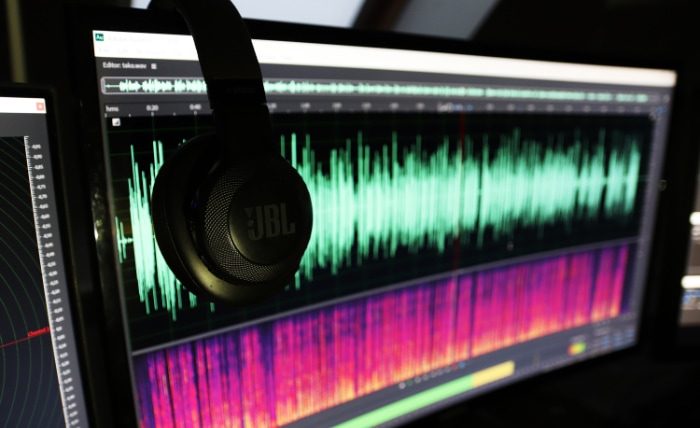What Are Audio Files? The Complete Breakdown

Audio files are the bedrock of our digital auditory experience, allowing us to store, transmit, and manipulate sound with unprecedented ease. These files serve as containers that preserve the quality and nuance of music, podcasts, and any form of audible media.
Whether you’re a music aficionado wanting to know the ins and outs of your FLAC collection, or a software developer trying to implement audio features in an application, understanding the complexities and types of audio files can be immensely beneficial.
History and Evolution of Audio Files
The journey of audio files is one of innovation and constant refinement, mirroring the broader trajectory of technological advancements.
The Era of Analog Sound
In the earliest days of audio recording and playback, analog systems reigned supreme. The invention of the phonograph by Thomas Edison in 1877 marked a groundbreaking moment, using a needle and a tinfoil cylinder to record and play back sound.
Over the years, this evolved into the more familiar vinyl records, magnetic tapes, and cassette tapes. These mediums had limitations, primarily in terms of storage and quality, but they laid the groundwork for the future of audio technology.
The Birth of Digital Audio
The digital revolution started to reshape the audio landscape in the late 20th century. One key development was the introduction of the Compact Disc (CD) in 1982.
Offering better sound quality, durability, and ease of use compared to analog formats, CDs quickly gained popularity. It was during this time that audio started to be stored as digital files, marking a major leap in the way we handle sound.
Compression Algorithms and File Formats
As digital technology advanced, so did the need for more efficient storage solutions. Enter compression algorithms, which allowed audio files to take up less space without significantly compromising quality.
The MP3 format, introduced in the early 1990s, became a watershed moment for audio files. It offered a way to compress audio data to a fraction of its original size, making it easier to store and transmit.
Open Source and Lossless Formats
In response to proprietary formats like MP3, the late ’90s and early 2000s saw the emergence of open-source and lossless formats, such as FLAC and Ogg Vorbis. These offered higher quality at the expense of larger file sizes, and appealed to audiophiles and professionals who prioritized sound fidelity above all else.
Streaming and Cloud-Based Solutions
The 2010s ushered in the era of streaming and cloud-based audio services. Platforms like Spotify and Apple Music capitalized on advancements in internet bandwidth and mobile technology to offer vast libraries of audio content.
These services often employ adaptive bit rate streaming, which adjusts the quality of an audio file in real-time based on the user’s internet speed.
Basic Characteristics of Audio Files
Audio files are more than just a collection of bits and bytes; they are carefully structured data containers designed to preserve sound.
Compression Versus Uncompressed Audio
Two primary types of audio files exist: compressed and uncompressed. Compressed audio files like MP3 or AAC use algorithms to reduce file size, usually at the cost of some loss in sound quality.
On the other hand, uncompressed files such as WAV or PCM offer higher fidelity but occupy more storage space. The choice between the two often depends on the intended use, be it casual listening or professional audio work.
Sampling Rates and Their Impact
The sampling rate of an audio file signifies how many samples of audio are taken per second. Measured in Hertz (Hz), common sampling rates include 44.1 kHz, 48 kHz, and 96 kHz. Higher sampling rates generally yield better sound quality but result in larger file sizes. For most consumer applications, a sampling rate of 44.1 kHz—used in CDs—is more than sufficient.
Bit Rate and Sound Quality
Bit rate is another crucial factor that influences the quality and size of an audio file. Expressed in kilobits per second (kbps), bit rate indicates the amount of data processed per unit of time.
A higher bit rate means better sound quality but also results in a larger file. Standard bit rates range from 128 kbps for compressed audio to upwards of 1411 kbps for uncompressed, CD-quality sound.
Audio Channels and Their Configurations
Audio files can be mono, stereo, or multi-channel. Mono files contain a single channel of audio, offering the same sound from all speakers.
Stereo audio, the most common type, has two distinct channels—left and right. Multi-channel audio goes beyond this, offering formats like 5.1 or 7.1 surround sound, which provide an immersive audio experience.
Frequency Range and Human Hearing
An often-overlooked characteristic is the frequency range that an audio file can reproduce. Human hearing ranges approximately from 20 Hz to 20 kHz.
Most audio files are engineered to fall within this spectrum, ensuring that all audible frequencies are well-represented. Some professional-grade audio files may extend beyond this range to capture ultrasonic or infrasonic frequencies, although these are not perceivable by the average human ear.
Audio File Metadata

Often considered the unsung hero of audio files, metadata plays an essential role in how we organize, search, and interact with our digital audio collection.
Definition of Metadata in the Audio Realm
Metadata refers to the additional information embedded within an audio file, separate from the audio data itself. This includes a variety of details such as artist name, track title, album, genre, and even album artwork.
The primary function of metadata is to facilitate the easy identification and retrieval of audio files in digital libraries and databases.
Common Metadata Fields
Some of the most prevalent metadata fields include:
- Title: The name of the track.
- Artist: The individual or group who performed the song.
- Album: The collection to which the track belongs.
- Year: The year the track was released or recorded.
- Genre: The musical or content style, such as rock, classical, or podcast.
- Track Number: The position of the audio track within its album or collection.
Advanced Metadata and Its Applications
Beyond these basic fields, audio files can also contain more advanced types of metadata. For instance, composer, conductor, bit rate, and copyright information may also be included.
In professional environments, additional technical metadata might be embedded for archival purposes, such as equalization settings or notes about the recording session.
Importance in Organization and Retrieval
Metadata serves as the backbone for digital audio organization. Music libraries, streaming services, and even professional audio editing software rely on metadata to categorize and sort audio files.
This makes the process of finding specific tracks or collections efficient and user-friendly.
Metadata Standards
Various standards for audio metadata exist to ensure consistency across different platforms and services. Some common standards are ID3 tags for MP3 files, Vorbis comments for OGG files, and RIFF chunks for WAV files.
These standards define the types of metadata fields that can be included and how they should be formatted, ensuring interoperability.
The Role of Metadata in Streaming Services
Streaming services have a unique application for metadata. Here, metadata not only serves the purpose of organization but also aids in personalized recommendation algorithms.
By analyzing metadata tags such as genre or artist, these services can offer suggestions tailored to individual user preferences.
File Conversion and Compatibility
In a world awash with different audio formats, file conversion and compatibility have become topics of increasing relevance. This part of our discussion looks at the essential aspects of audio file conversion, the tools available for the task, and why compatibility matters across various software and systems.
The Need for Audio File Conversion
There are multiple scenarios where converting audio files becomes necessary. For instance, some software may only support specific audio formats, requiring you to convert files for compatibility.
Additionally, you may want to reduce file size for easier storage or transmission, which often involves converting to a compressed format. Finally, for audiophiles and professionals, converting files to a lossless format may be desirable for preserving audio quality.
Tools and Software for Conversion
A range of software options exists for converting audio files, each with its unique features and capabilities. Some popular choices include Audacity, Adobe Audition, and various dedicated audio converter tools.
Mobile applications are also available for those who need to convert audio files on the go. The software you choose may depend on factors like ease of use, conversion speed, and the range of supported formats.
Compatibility Issues
Different operating systems, media players, and devices often have varying levels of support for audio file formats. For example, while MP3 and AAC are universally supported, other formats like FLAC and OGG may not be compatible with all systems.
Thus, understanding the compatibility limitations of your software or device is crucial for hassle-free audio playback.
Lossy Versus Lossless Conversion
The conversion process can either be lossy or lossless, each with its pros and cons. Lossy conversion reduces the file size but can degrade audio quality.
This is usually sufficient for casual listening but might not be suitable for professional applications. Lossless conversion, on the other hand, preserves the quality of the audio but results in larger file sizes. The choice between lossy and lossless often hinges on your specific needs and constraints.
Considerations in Batch Conversion
For professionals or users dealing with large libraries of audio files, batch conversion becomes an important feature. It allows you to convert multiple files at once, saving time and effort.
However, one must be cautious about settings and output formats when performing batch conversion to ensure consistency and quality.
Role of Online Converters
Online audio converters offer another avenue for converting files. These web-based services are generally user-friendly and do not require any software installation.
However, they may have limitations in terms of file size, speed, and the range of supported formats. Moreover, the security of your data could be a concern when using online services.
Conclusion
Mastering the intricacies of audio files opens up a world of possibilities for both casual listeners and industry professionals. From the historical evolution to fundamental characteristics, and from the silent yet powerful role of metadata to the practicalities of file conversion and compatibility, each facet contributes to a holistic understanding.
Whether the focus is on sound quality, data organization, or seamless interaction across different platforms, these elements serve as the foundation for making well-informed decisions in the realm of digital audio. With this comprehensive look, you are now better equipped to appreciate the complexity and versatility that audio files bring to our digital lives.



